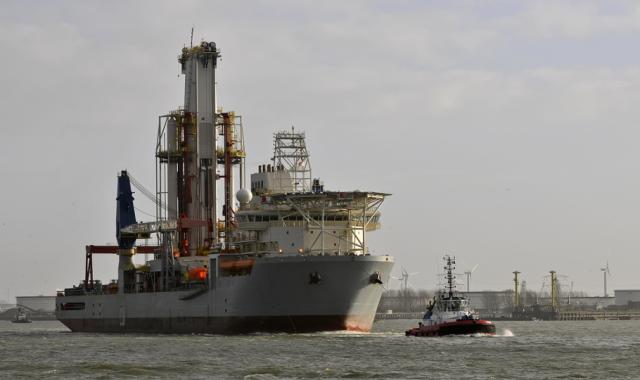
As rig retirements slow amid a continued oversupply of floaters, the future could hold more bleak news for some in the offshore drilling sector.
In its latest offshore driller quarterly update, Barclays said the abundance of floaters will keep day rates down at least until 2018. This comes as oil and gas companies prepare to start the year off with plans to spend less offshore than in previous years.
“Despite recent outperformance, we see little reason for optimism among offshore drilling contractors, particularly in light of recent guidance from IOCs for dramatically reduced offshore spending in 2016,” Barclays said in the report, singling out the massive oversupply of sixth- and seventh-generation rigs.
Currently, there are 278 floaters worldwide ready to work, and 74%—or 207—of these are contracted; however, contracts for 78 floaters will end between now and the end of next year, Barclays said.
The firm believes that the number of floaters without work lined up could rise as high as 170 by year-end 2016, up from 71 today, assuming there are no new contracts or extensions. That would put the percentage of uncontracted floaters at 54% of the estimated 2016 marketed supply of 313.
Most of today’s oversupply is coming from the Asia-Pacific region, where 22 of the 46 floaters are currently uncontracted. More than half of the floaters without contracts in the region are fourth-generation. That could climb 42, or 80%, of the supply by the end of 2016, if oil and gas companies clamp down on offshore spending, the report said.
Brazil and the Gulf of Mexico (GoM) appear to be faring better having the least overcapacity at about 8% and 9%, respectively.
Of the GoM’s 55 total marketed supply of floaters, five are uncontracted. Barclays says this could increase to nine by the end of this year. If dire market conditions persist with no new contracts awarded or extended, the count could rise to 24 by year-end 2016, bringing the percentage of uncontracted floaters to 39% with sixth- and seventh-generation floaters comprising most of the oversupply.
In Brazil, only four of 53 floaters are currently without contracts. If no new contracts are awarded or existing ones extended, the region could end the year with six uncontracted floaters. Barclays said the number of uncontracted floaters offshore Brazil could increase to 20 by the end of 2016.
In the North Sea, 14 of the region’s floater fleet of 16 are presently without contracts, according to the report. Most of these are fourth generation, unlike offshore West Africa, where oversupply is greatest for sixth- and seventh-generation floaters. In the West African region, Barclays said 14 of the 43 floaters ready for work are uncontracted.
The firm notes that the outlook takes into account anticipated newbuild deliveries as well as rigs coming off contract.
In all, Barclays said 21 uncontracted newbuilds are set to be delivered in 2016 with another seven expected in 2017, while 78 floaters are due to come off contract during that time. Since October 2014, 43 floaters have retired; however, there have been only eight retirements since June 2015.
The oversupply “looks daunting in light of major cuts to 2016 offshore spending plans from major offshore oil companies, Barclays said.
Most of the floaters with secured contracts are Sete Brazil rigs with Petrobras, which has lowered its spending to $19 billion in 2016 from $25 billion in 2015 and is working to reduce its rig fleet.
In addition, the cost to warm-stack drillships has fallen to between $40,000 and $50,000 per day, compared to $80,000 to $100,000 a year ago, Barclays said, “which will only delay retirements further.”
Velda Addison can be reached at vaddison@hartenergy.com.
Recommended Reading
Marketed: Paloma Natural Gas Eagle Ford Shale Opportunity in Frio County, Texas
2024-02-16 - Paloma Natural Gas has retained EnergyNet for the sale of a Eagle Ford/ Buda opportunity in Frio County, Texas.
Marketed: Kaiser-Francis Oil Mississippi Opportunity
2024-03-11 - Kaiser-Francis Oil Co. has retained EnergyNet for the sale of a Gilliland 34-1H opportunity in Monroe County Mississippi.
Marketed: Stone Hill 41 Well Package in Howard County, Texas
2024-02-16 - Stone Hill Exploration and Production has retained EnergyNet for the sale of a Midland Basin 41 well package (11 PDP wells, 5 WIPs and 25 PUD locations) in Howard County, Texas.
Marketed: Williston, Powder River Basins 247 Well Package
2024-03-11 - A private seller has retained EnergyNet for the sale of a Williston and Powder River basins 247 well package in Sheridan, Montana, Burke and McKenzie counties, North Dakota and Campbell County, Wyoming.
Marketed: BKV Chelsea 214 Well Package in Marcellus Shale
2024-04-18 - BKV Chelsea has retained EnergyNet for the sale of a 214 non-operated well package in Bradford, Lycoming, Sullivan, Susquehanna, Tioga and Wyoming counties, Pennsylvania.
